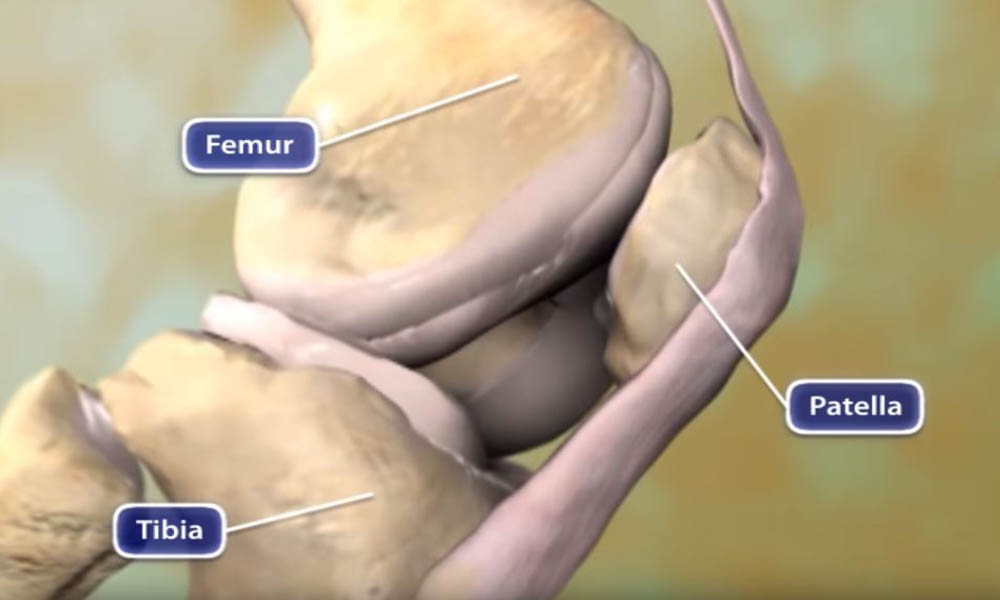Treatment
Viscosupplementation Treatment for Knee Arthritis
Osteoarthritis of the knee is one of the leading causes of disability in the U.S. Arthritis develops slowly and the associated pain can worsen over time. Although there is no cure for osteoarthritis, there are many treatment options available to help people manage pain and stay active.
In its early stages, arthritis of the knee is treated with nonsurgical methods. Your doctor may recommend a range of treatments, including:
- Modifying your activities
- Weight loss
- Pain relievers, such as acetaminophen or nonsteroidal anti-inflammatory drugs (NSAIDs) like ibuprofen
- Physical therapy
- Corticosteroid injections
Another treatment option is a viscosupplementation injection. If you have tried all other nonsurgical treatment methods and your pain continues to limit your activities, viscosupplementation may be an option.
In this procedure, a gel-like fluid called hyaluronic acid is injected into the knee. Hyaluronic acid is a naturally occurring substance found in the synovial fluid surrounding joints. It acts as a lubricant to enable bones to move smoothly over each other and as a shock absorber for joint loads. People with osteoarthritis have a lower-than-normal concentration of hyaluronic acid in their joints. The theory is that adding hyaluronic acid to the arthritic joint will aid movement and reduce pain.
The most recent research, however, has not found viscosupplementation to be effective at significantly reducing pain or improving function. Although some patients report pain relief with the procedure, some people do not get improvement in their symptoms with the injections.
Viscosupplementation was first used in Europe and Asia and was approved by the U.S. Food and Drug Administration in 1997. Several preparations of hyaluronic acid are now commercially available.
Procedure
Depending on the product used, you will receive 1 to 5 shots over several weeks.
During the procedure, if there is any swelling in your knee, your doctor may remove (aspirate) the excess fluid before injecting the hyaluronic acid. Usually, the aspiration and injection are done using only one needle injected into the joint, but some doctors may prefer to use two separate syringes.
For the first 48 hours after the injection, you should avoid excessive activity, such as jogging or heavy lifting.
Side Effects
You may notice a local reaction, such as pain, warmth, and slight swelling immediately after the shot. These symptoms can be improved with the use of ice, and they generally go away fairly quickly.
Complications
Rarely, patients may develop a local allergy-like reaction in the knee. In these cases, the knee may become full of fluid, red, warm, and painful. If this occurs, contact your doctor immediately.
Infection and bleeding are also very rare complications of this procedure.
Outcomes
As is noted above, some patients do not get improvement in their symptoms with the use of viscosupplementation. For those who report pain relief with the procedure, it may take several weeks to notice an improvement. How long the effects last varies. Some patients report pain relieving effects for several months following the injections.
If the injections are effective, they may be repeated after a period of time, usually 6 months.
Although some patients report relief of arthritis symptoms with viscosupplementation, the procedure has never been shown to reverse the arthritic process or re-grow cartilage.
The effectiveness of viscosupplementation in treating arthritis is not clear. It has been proposed that viscosupplementation is most effective in the early stages of arthritis (mild to moderate), but more research is needed to support this. Research on the long-term effects of viscosupplementation is ongoing.
Contributed and/or Updated by
Peer-Reviewed by
AAOS does not endorse any treatments, procedures, products, or physicians referenced herein. This information is provided as an educational service and is not intended to serve as medical advice. Anyone seeking specific orthopaedic advice or assistance should consult his or her orthopaedic surgeon, or locate one in your area through the AAOS Find an Orthopaedist program on this website.







